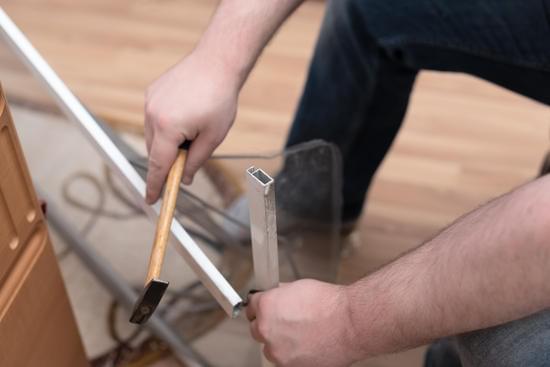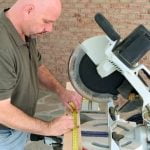Are you wondering what home improvements are tax deductible 2016? As a homeowner, it’s important to understand how you can potentially save money on your taxes by making eligible home improvements. In this article, we will discuss the ins and outs of tax deductible home improvements in 2016, including what qualifies for deductions, the documentation required, and how to maximize your deductions on your tax return.
When it comes to tax deductible home improvements in 2016, there are specific criteria that must be met in order to qualify for deductions. Understanding these criteria can help you make informed decisions about which home improvements are worth investing in for potential tax benefits. Additionally, knowing the limits and restrictions on tax deductions for home improvements can help you manage your expectations and plan accordingly.
Throughout this article, we will provide an overview of eligible home improvements for tax deductions, as well as specific examples of qualifying projects. We will also cover the qualifications needed to claim tax deductions on home improvements, along with the documentation required to support your claims. Whether you’re considering renovating your kitchen or updating your energy efficient appliances, understanding the potential tax benefits can be a valuable incentive for making these investments in your home.
Overview of Home Improvements Eligible for Tax Deductions
When it comes to home improvements, not all expenses are tax deductible. However, there are certain types of home improvements that may qualify for a tax deduction in 2016. Understanding which home improvements are eligible for tax deductions can help homeowners save money and maximize their deductions. Below is an overview of the types of home improvements that are generally eligible for tax deductions in 2016:
- Energy-Efficient Upgrades: Homeowners who make energy-efficient improvements to their homes, such as installing solar panels, energy-efficient windows or doors, or a high-efficiency heating and cooling system, may be eligible for tax credits or deductions.
- Medical Related Home Improvements: If a homeowner makes home improvements related to medical purposes, such as installing ramps, widening doorways for wheelchair accessibility, or adding handrails in the bathroom for medical reasons, these expenses may be tax deductible.
- Home Office Expenses: Individuals who use part of their home regularly and exclusively for business purposes may be able to deduct expenses related to maintaining and improving the workspace area at home.
It is important to note that not all home improvement projects will qualify for tax deductions. Cosmetic upgrades or general repairs and maintenance typically do not qualify, unless they fall under specific guidelines specified by the IRS. It is recommended that homeowners consult with a tax professional or refer to the IRS guidelines to determine if their specific home improvement expenses are eligible for tax deductions in 2016.
In addition to understanding which types of home improvements are generally eligible for tax deductions in 2016, it is also important to familiarize oneself with any limitations or restrictions that may apply. By being aware of these considerations upfront, homeowners can better plan and allocate their resources towards qualifying activities that will give them the maximum benefit when claiming tax deductions on their home improvements.
Specific Examples of Tax Deductible Home Improvements in 2016
Energy-Efficient Upgrades
One specific example of a tax deductible home improvement in 2016 is making energy-efficient upgrades to your home. This can include installing solar panels, energy-efficient windows and doors, insulation, and certain types of roofing. These improvements not only help reduce your energy bills, but they also qualify for tax credits under the Residential Energy Efficiency Property Credit.
Medical Accessibility Modifications
Another example of a tax deductible home improvement is making modifications for medical accessibility. This can include adding wheelchair ramps, widening doorways, installing handrails in bathrooms, and lowering kitchen cabinets for easier access. These modifications may be necessary for individuals with disabilities or medical conditions, and they are considered eligible expenses for tax deductions under certain circumstances.
Home Office Expenses
In 2016, home office expenses for self-employed individuals or those who work from home may also be considered as tax deductible home improvements. This can include costs associated with setting up and maintaining a designated home office space, such as renovations, repairs, and maintenance. However, it’s important to carefully track these expenses and ensure that the home office meets the IRS criteria for claiming deductions.
Qualifications for Claiming Tax Deductions on Home Improvements
Eligible Home Improvements
When it comes to claiming tax deductions on home improvements in 2016, it is important to understand which improvements qualify. The IRS allows deductions for improvements that add value to the home, prolong its life, or adapt it to new uses.
This can include the installation of energy-efficient heating and cooling systems, solar panels, insulation, and certain types of roofing. It can also include improvements to the home’s general structure such as adding a swimming pool or a garage.
Primary Residence
One important qualification for claiming tax deductions on home improvements is that they must be made on your primary residence. This means that any improvements made on a vacation home or rental property may not be eligible for tax deductions. It is crucial to keep this in mind when considering which home improvements you plan to claim on your tax return.
Relevant Expenses
In order to qualify for tax deductions, the expenses related to the home improvement must be incurred between January 1st and December 31st of 2016. This includes all costs associated with materials, labor, and any additional fees related to the improvement. It’s important to keep detailed records of these expenses in order to accurately claim them on your tax return.
Documentation Required for Claiming Tax Deductions on Home Improvements
When it comes to claiming tax deductions for home improvements in 2016, it is important to keep accurate and detailed documentation of the expenses incurred. The IRS requires specific documentation to support your claim for tax deductions on home improvements. Here are the types of documentation required for claiming tax deductions on home improvements:
- Receipts and Invoices: To support your claim for tax deductions on home improvements, it is essential to keep all receipts and invoices related to the expenses incurred. This includes materials, labor costs, and any fees associated with the home improvement project.
- Contracts and Agreements: If you hired a contractor or professional service for the home improvement project, you will need to provide copies of all contracts and agreements. This will help substantiate your claim for tax deductions on eligible home improvements.
- Proof of Payment: In addition to receipts and invoices, proof of payment such as credit card statements, checks, or bank statements should be kept as supporting documentation for your tax deduction claim.
It is important to keep these documents organized and easily accessible in case the IRS requests verification of your tax deduction claim for home improvements. Without proper documentation, your claim may not be approved by the IRS.
Remember that accurate record-keeping is crucial when it comes to claiming tax deductions on home improvements in 2016. By keeping thorough documentation of all expenses related to eligible home improvements, you can maximize the potential for tax savings while also ensuring compliance with IRS regulations.
Important Reminder
Always consult with a qualified tax professional or accountant regarding what home improvements are tax deductible in 2016 and how to properly document them for claiming tax deductions on your tax return. Be sure to stay informed about any changes or updates to IRS regulations regarding eligible home improvements for tax deductions.
Limits and Restrictions on Tax Deductions for Home Improvements
When it comes to tax deductions for home improvements in 2016, it’s important to understand that not all expenses will qualify. To start, it’s crucial to note that only improvements made for the purpose of medical care or to accommodate a disabled individual may be tax deductible. This means that general home improvement projects, such as kitchen renovations or landscaping, typically do not meet the criteria for tax deductions.
In addition, the IRS has specific guidelines for what qualifies as a tax-deductible home improvement. For example, if the improvement increases the value of your property or adapts your home to new uses (such as adding a new room), these expenses are usually considered an increase in basis and may impact your potential deductions.
It’s also important to keep in mind that any personal use of the property can affect your ability to claim certain expenses. If you use part of your home exclusively and regularly for business purposes, you may be eligible to deduct expenses related to that portion of your home – but there are strict rules governing these deductions.
| Limits and Restrictions | Tax Deductions |
|---|---|
| Improvements for medical care or disabled individuals are typically eligible | X |
| General home improvement projects like kitchen renovations are usually not deductible | X |
| Expenses increasing property value or adapting the home to new uses might not qualify for deduction | X |
How to Claim Tax Deductions for Home Improvements on Your Tax Return
To claim tax deductions for home improvements on your tax return, you will need to itemize your deductions rather than taking the standard deduction. This means keeping careful track of all expenses related to the home improvement projects and maintaining accurate records for tax purposes. When it comes time to file your taxes, you will need to fill out Schedule A (Form 1040) and include any eligible home improvement expenses in the appropriate sections.
When claiming tax deductions for home improvements, it’s important to ensure that the improvements meet the IRS criteria for eligibility. For example, the improvements must be considered capital expenses that increase the value of your home or prolong its useful life. Repairs and maintenance typically do not qualify for tax deductions, but upgrades such as adding a new room, renovating a kitchen or bathroom, or installing energy-efficient features may be eligible.
Additionally, it is crucial to keep thorough documentation of all expenses related to eligible home improvements. This includes invoices, receipts, contracts with contractors or builders, and any other relevant paperwork. It’s also a good idea to take before-and-after photos of the home improvement projects as further proof of the work done. By maintaining proper documentation, you can support your claims in case of an audit by the IRS.
As with any tax-related matters, it’s advisable to seek professional guidance from a qualified accountant or tax advisor when claiming deductions for home improvements on your tax return. They can provide valuable insight into what specific expenses are eligible for deductions and ensure that you are maximizing your tax benefits while remaining compliant with IRS regulations.
Overall, claiming tax deductions for home improvements on your tax return requires diligence in record-keeping and adherence to IRS guidelines. By understanding the qualifications and documentation required for these deductions, homeowners can make informed decisions about their home improvement projects and potentially reduce their taxable income in 2016.
Important Reminders and Tips for Maximizing Tax Deductions on Home Improvements in 2016
When it comes to maximizing tax deductions on home improvements in 2016, there are several important reminders and tips to keep in mind. First and foremost, it is crucial to remember that not all home improvements are eligible for tax deductions.
It’s important to understand which specific types of renovations or upgrades qualify for tax deductions and which do not. This leads into the next reminder, which is to ensure that you are aware of the specific examples of tax deductible home improvements in 2016.
One tip for maximizing tax deductions on home improvements is to keep detailed documentation of all expenses related to the renovations or upgrades. This includes receipts, invoices, and any other relevant paperwork that can serve as proof of the costs incurred. Another important reminder is to be aware of the qualifications for claiming tax deductions on home improvements. Understanding the eligibility requirements will help ensure that you meet all necessary criteria when claiming these deductions on your tax return.
It’s also important to note that there are limits and restrictions on tax deductions for home improvements. Being aware of these limits will help you manage your expectations and avoid any potential issues when claiming deductions.
Lastly, when it comes time to claim tax deductions for home improvements on your tax return, consider seeking professional advice from a tax specialist or accountant. They can provide personalized guidance based on your individual circumstances and ensure that you are maximizing your eligible deductions while remaining compliant with current tax laws.
| Key Reminder/Tips | Description |
|---|---|
| Documentation | Keep detailed records of expenses related to renovations or upgrades. |
| Qualifications | Understand the eligibility requirements for claiming tax deductions. |
| Limits and Restrictions | Be aware of any limits or restrictions on tax deductions for home improvements. |
Conclusion
In conclusion, understanding what home improvements are tax deductible in 2016 is crucial for homeowners looking to maximize their tax benefits. By knowing which home improvements qualify for tax deductions, individuals can make informed decisions about their renovation projects and potentially save money during tax season. It is important to stay informed about the specific examples of tax deductible home improvements in 2016, as well as the qualifications and documentation required for claiming these deductions.
By being aware of the limits and restrictions on tax deductions for home improvements, homeowners can manage their expectations and plan their projects accordingly. Maximizing tax deductions on home improvements in 2016 also requires careful consideration and thorough documentation of expenses. Additionally, knowing how to properly claim these deductions on a tax return will further help homeowners take advantage of any potential savings.
In summary, the knowledge of what home improvements are tax deductible in 2016 can greatly impact a homeowner’s financial situation. Being well-informed about eligible renovations, requirements for claiming deductions, limitations, and proper procedures will ultimately allow individuals to make the most out of potential tax benefits related to home improvements.
Frequently Asked Questions
Is New Flooring Tax Deductible?
New flooring may be tax deductible if it is considered a necessary improvement for medical reasons or for home office use. However, general home renovations for personal preference are typically not tax deductible.
Can I Write Off Home Office Improvements?
Home office improvements can be written off as a business expense if the space is used exclusively and regularly for business purposes. This includes expenses related to painting, repairs, or any other improvements made to the home office.
What Home Improvements Are Tax Deductible IRS?
The IRS allows for tax deductions on home improvements related to medical care, such as adding entrance ramps or modifying bathrooms. Energy-efficient upgrades, like solar panels or certain appliances, may also qualify for tax credits rather than deductions. It’s important to consult with a tax professional to ensure eligibility when claiming these deductions.

I’m thrilled to have you here as a part of the Remodeling Top community. This is where my journey as an architect and remodeling enthusiast intersects with your passion for transforming houses into dream homes.





